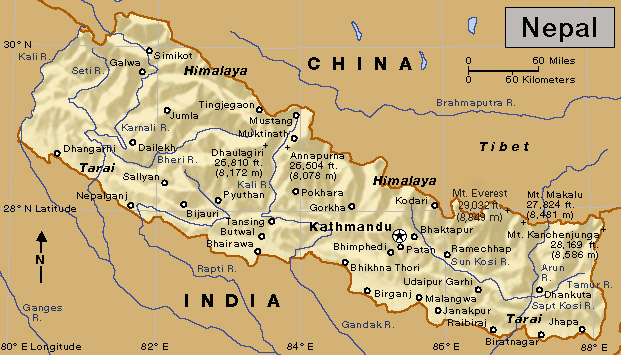Kathmandu, << kaht mahn DOO >> (pop. 420,000), also spelled Katmandu, is the capital and largest city of Nepal. It lies in a valley in central Nepal amid the Himalayan foothills. The city is known for its many graceful Hindu and Buddhist temples. Kathmandu’s main industry is tourism. Light industry in the city includes brick, carpet, and concrete manufacturing; and woodworking and metalworking.

Kathmandu has been inhabited for at least 2,600 years. The first known settlers were the Newars. In 1768, the nearby kingdom of Gorkha conquered Kathmandu and united the region that became the modern kingdom of Nepal. Today, members of several ethnic groups live in Kathmandu. Most of the city’s people are Hindus, but many are Buddhists.
On April 25, 2015, a powerful earthquake struck central Nepal. In the weeks that followed, the region was rocked by many aftershocks. Aftershocks are smaller quakes that follow a main, larger earthquake. About 9,000 people died in the series of tremors, making the disaster the deadliest in Nepal’s history. Much of Kathmandu was badly damaged in the disaster.
